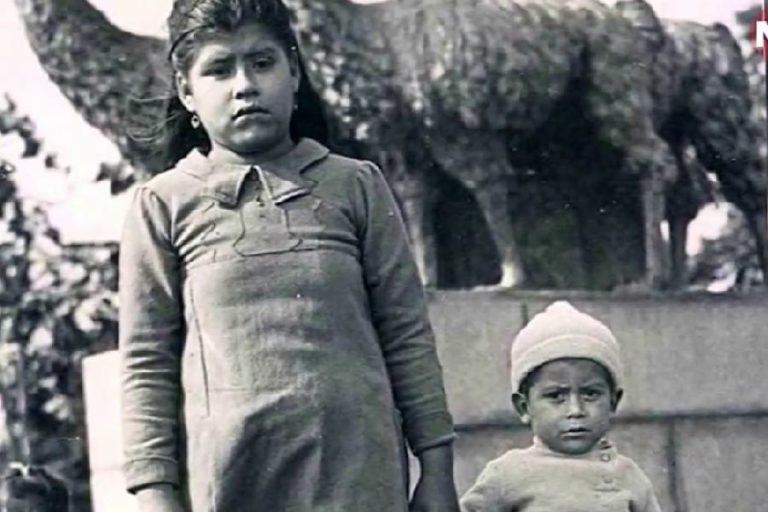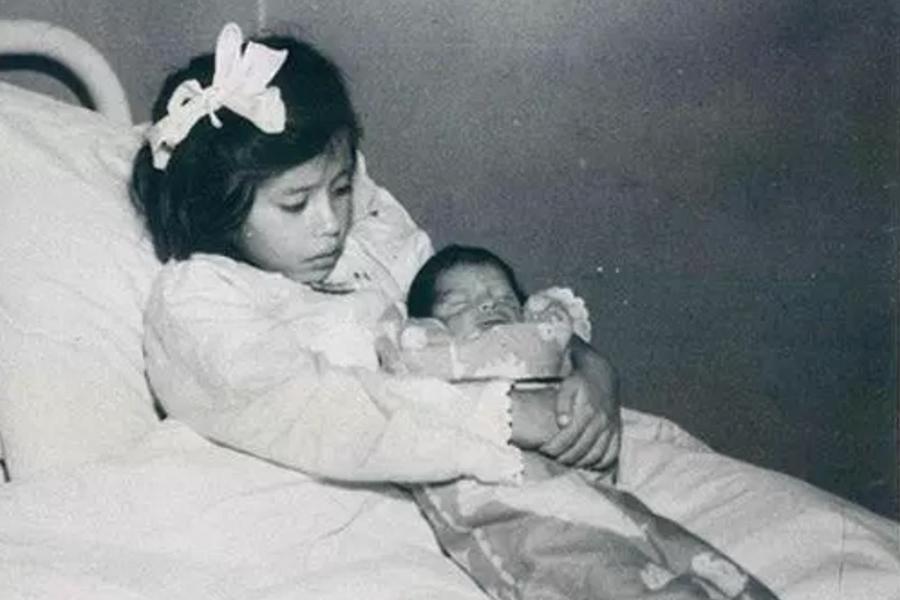What's The Youngest Mother? Unveiling The Shocking Truth Behind This Record
Ever wondered what's the youngest mother in recorded history? This story will blow your mind, and trust me, it’s not something you hear every day. Imagine a girl so young, barely into her teens, becoming a mother. Sounds crazy, right? But this isn’t just a random tale—it’s a real-life scenario that has shocked the world for decades. Let’s dive in and uncover the truth behind this incredible record.
When we talk about "what's the youngest mother," we're stepping into a topic that touches on health, societal norms, and even human biology. It's not just about breaking records; it's about understanding how and why such an event could happen. This story is both fascinating and heartbreaking, and it deserves a deeper look.
As we explore this topic, we'll break down the facts, the science, and the emotional weight behind this record. Whether you're here out of curiosity or to understand the broader implications, this article aims to deliver everything you need to know. So, buckle up because this journey is going to be wild.
Read also:Jason Richardson The Highflying Journey Of A Slam Dunk Legend
Here's a quick guide to what we'll cover:
- Biography of the Youngest Mother
- Facts About the Youngest Mother
- Health Implications
- Societal Impact
- The Science Behind Early Pregnancy
- World Records in Motherhood
- Prevention and Education
- Support for Young Mothers
- Historical Perspective
- Conclusion
Biography of the Youngest Mother
Now, let’s get into the details. The title of the youngest mother in the world belongs to Lina Medina, a Peruvian girl who gave birth at the age of 5 years, 7 months, and 21 days. Yep, you read that right—five years old. Born on September 23, 1933, in Ticrapo, Peru, Lina’s story is one of the most astonishing in medical history.
Data and Facts About Lina Medina
To give you a clearer picture, here's a breakdown of her life:
| Full Name | Lina Marcela Medina de Jurado |
|---|---|
| Date of Birth | September 23, 1933 |
| Age at Motherhood | 5 years, 7 months, and 21 days |
| Place of Birth | Ticrapo, Peru |
| Profession | Housewife and Seamstress |
So, how did this happen? Keep reading because the story gets even more intriguing.
Facts About the Youngest Mother
When Lina Medina was brought to the hospital in 1939, doctors were baffled. A five-year-old girl showing signs of pregnancy? It didn’t add up. But after a series of tests, including X-rays, it was confirmed: Lina was indeed pregnant. She delivered a baby boy via cesarean section on May 14, 1939, and named him Gerardo.
What Made This Possible?
Medical experts later discovered that Lina had a rare condition called precocious puberty, which caused her body to mature at an incredibly early age. By the time she was just four years old, her reproductive system was fully developed, making her capable of conceiving.
Read also:Joseacute Coacuterdoba The Rising Star Taking The World By Storm
Here’s a list of key facts:
- Lina was diagnosed with precocious puberty, a condition affecting one in every 50,000 girls.
- Her father was initially suspected of abuse, but no charges were ever filed.
- Gerardo, her son, grew up believing Lina was his sister until he was ten years old.
Health Implications
Now, let’s talk about the health aspects of such an early pregnancy. For a child as young as Lina, carrying a baby is no small feat. Her body wasn’t fully developed, and the risks were immense. Complications like pre-eclampsia, gestational diabetes, and even life-threatening conditions could have arisen.
Why Is Early Pregnancy Dangerous?
Here’s why early pregnancy poses serious risks:
- Underdeveloped pelvis, leading to obstructed labor.
- Increased risk of premature birth and low birth weight.
- Higher chances of maternal mortality.
Despite these risks, Lina survived, thanks to modern medical intervention at the time. Her story highlights the importance of understanding and addressing precocious puberty.
Societal Impact
What's the youngest mother? It’s not just a medical question; it’s a societal one. Lina’s story sparked debates worldwide about child protection, education, and the role of parents in preventing early pregnancies. In many cultures, the topic of sexuality is still taboo, and this record serves as a wake-up call.
Breaking the Silence
Here are some societal implications:
- Increased awareness about sexual education in schools.
- Efforts to combat child abuse and exploitation.
- Advocacy for better healthcare for young girls.
We need to ensure that no child ever has to face what Lina did, and that starts with open conversations about these issues.
The Science Behind Early Pregnancy
Let’s dive into the science of it all. Precocious puberty, the condition that Lina had, is caused by hormonal imbalances. It can be triggered by genetic factors, environmental influences, or even tumors. Understanding this condition is crucial in preventing similar cases in the future.
How Does Precocious Puberty Work?
Here’s a quick breakdown:
- Hormones like LH and FSH are released earlier than normal.
- This leads to the development of secondary sexual characteristics at an early age.
- Girls may experience menstruation and fertility before reaching adolescence.
Early detection and treatment can help manage this condition, reducing the risk of unwanted pregnancies.
World Records in Motherhood
Lina Medina holds the Guinness World Record for the youngest mother, but she’s not alone. Throughout history, there have been other cases of exceptionally young mothers. However, none compare to Lina’s record. These stories highlight the importance of addressing reproductive health globally.
Other Notable Cases
Here are a few examples:
- A girl in India gave birth at the age of eight.
- In Pakistan, a nine-year-old girl became a mother.
- These cases are rare but serve as reminders of the challenges faced by young girls worldwide.
Prevention and Education
So, how do we prevent such cases from happening again? Education is key. Teaching young people about their bodies, consent, and reproductive health can make a huge difference. Governments, NGOs, and communities must work together to create safe environments for children.
Steps We Can Take
Here’s what we can do:
- Implement comprehensive sex education in schools.
- Provide access to healthcare and counseling services.
- Raise awareness about the dangers of early pregnancy.
Every child deserves a childhood free from such burdens, and it’s our responsibility to make that happen.
Support for Young Mothers
For those who do become young mothers, support is crucial. Whether it’s emotional, financial, or educational, helping these girls lead fulfilling lives is essential. Programs and initiatives aimed at empowering young mothers can make a significant impact.
Resources for Young Mothers
Here are some resources:
- Local support groups and counseling services.
- Government grants and scholarships for education.
- Community programs offering childcare and job training.
These resources can help young mothers overcome the challenges they face and build brighter futures for themselves and their children.
Historical Perspective
Looking back, the history of young motherhood is complex. In many cultures, early marriages and pregnancies were once common. However, as societies have evolved, so too have our views on these practices. Understanding this history can help us move forward in a positive direction.
How Far We’ve Come
Here’s a brief timeline:
- Early 20th century: High rates of child marriage and early pregnancies.
- Mid-20th century: Increased awareness and advocacy for women’s rights.
- 21st century: Global efforts to end child marriage and promote reproductive health.
We’ve come a long way, but there’s still work to be done.
Conclusion
So, what's the youngest mother? The answer is Lina Medina, whose story continues to captivate and educate people around the world. Her case highlights the importance of understanding precocious puberty, addressing societal norms, and providing support for young mothers.
Here’s a quick recap:
- Lina Medina became a mother at the age of five.
- Precocious puberty played a significant role in her early pregnancy.
- Education and support are crucial in preventing similar cases.
Now, it’s your turn. Share this article with your friends and family, and let’s keep the conversation going. Together, we can make a difference in the lives of young girls everywhere. And remember, if you know someone who might benefit from this information, don’t hesitate to reach out. Let’s build a better future for all.
Article Recommendations


